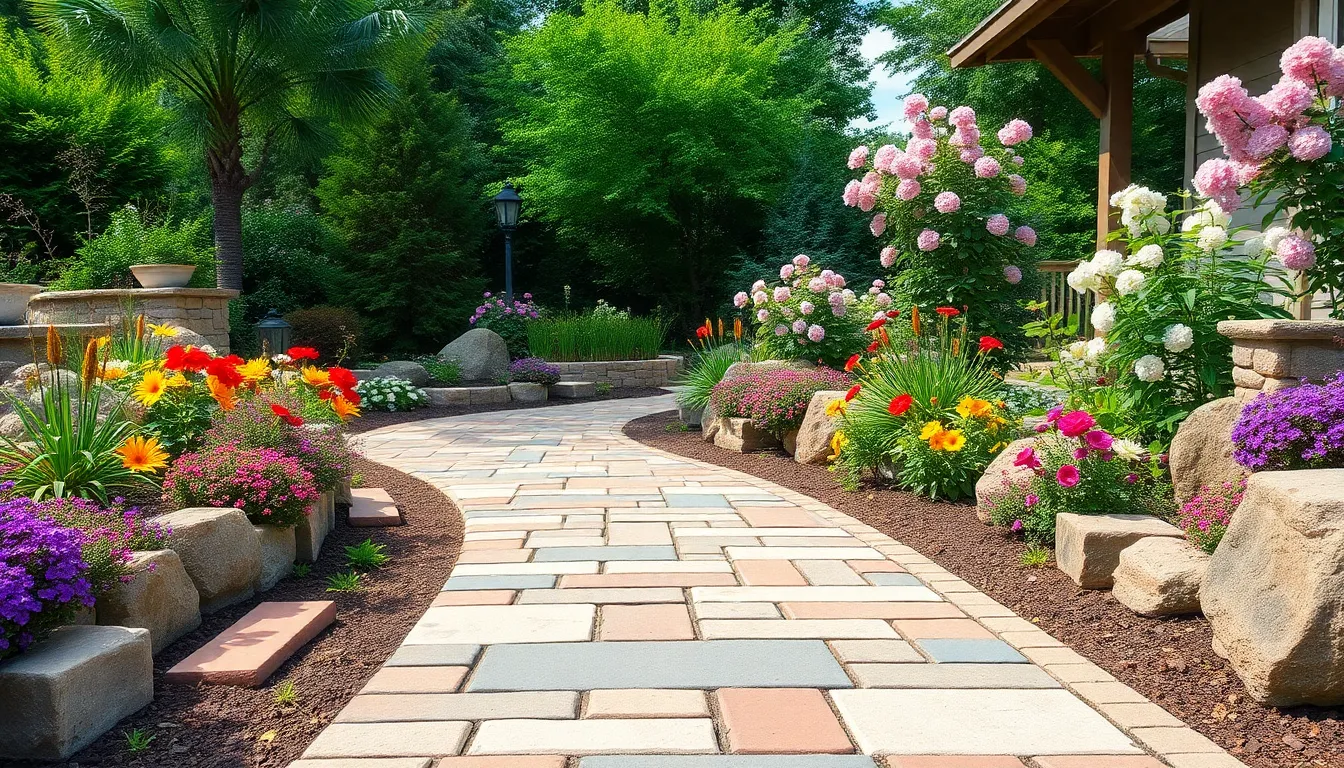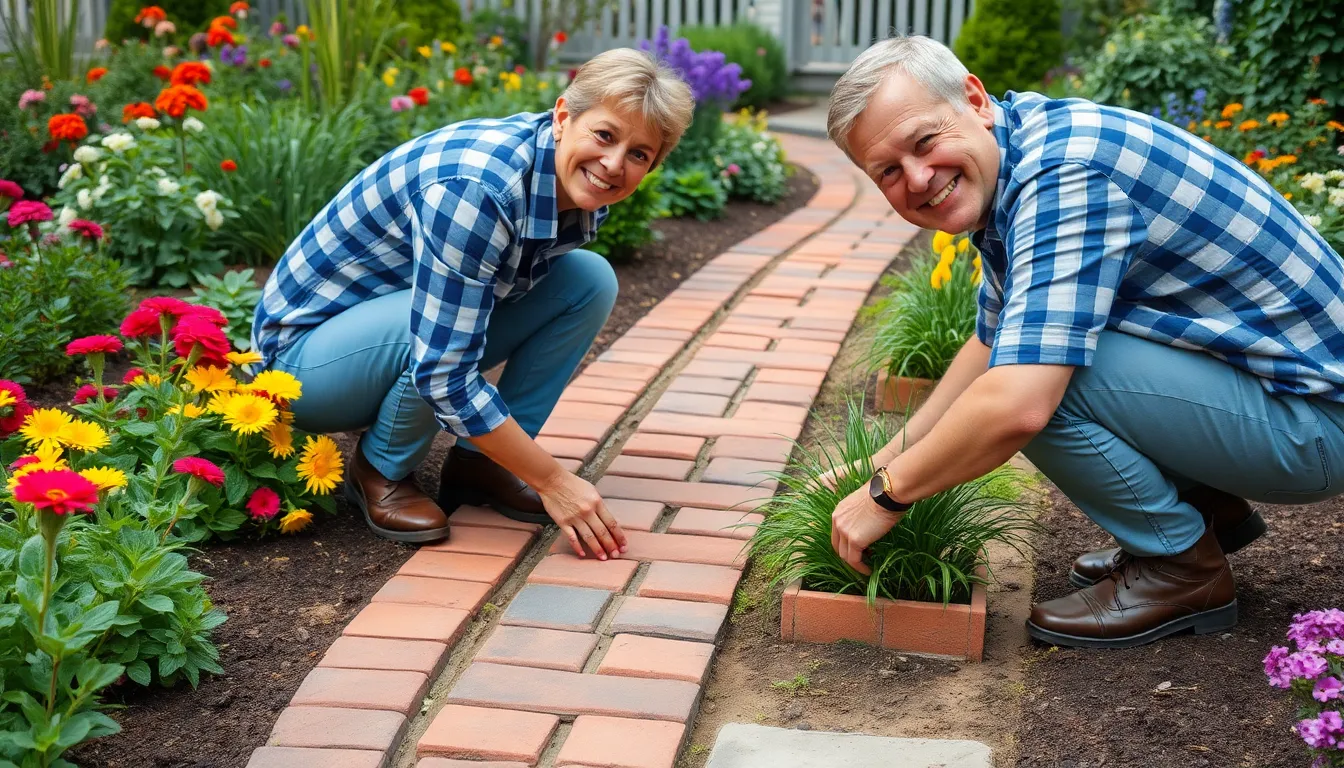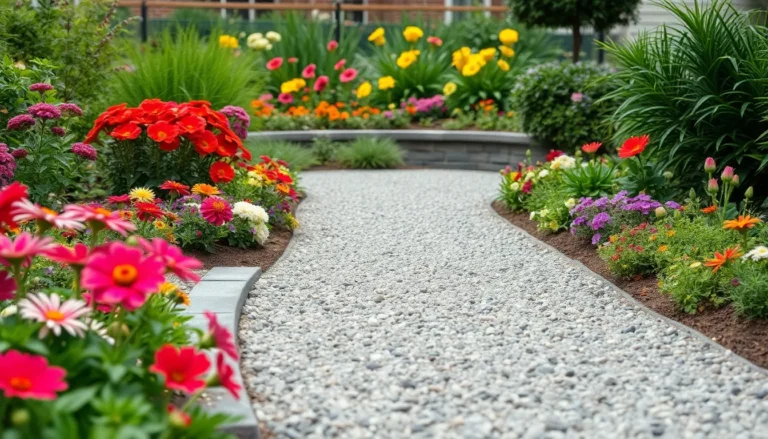When it comes to landscaping, bricks are like the Swiss Army knife of outdoor design. They’re versatile, durable, and can turn any drab yard into a stunning masterpiece faster than you can say “landscaping makeover.” From charming walkways to sturdy retaining walls, bricks bring a touch of elegance and functionality that can make even the neighbors a little envious.
But let’s not kid ourselves—choosing the right bricks isn’t just about looks. It’s about creating a space that reflects personality while standing up to the elements. With a little creativity, those humble bricks can transform a plain garden into a vibrant oasis. So, whether you’re a seasoned gardener or just looking to spruce up your outdoor space, let’s dive into the world of bricks and discover how they can elevate your landscaping game to a whole new level.
Bricks for Landscaping
Bricks serve multiple functions in landscaping, offering both aesthetic appeal and structural integrity. They can create pathways, patios, and retaining walls, significantly enhancing outdoor spaces. Various types exist—clay, concrete, and recycled—for different applications and styles.
Clay bricks dominate the landscaping market due to their natural look and thermal properties. They resist wear and tear, making them suitable for high-traffic areas like walkways and driveways. Concrete bricks provide a cost-effective alternative with versatility to match any design scheme. Their strength makes them ideal for load-bearing structures.
Recycled bricks present an eco-friendly choice, promoting sustainable practices. These bricks often incorporate unique textures and colors, adding character to any landscape. Builders and gardeners alike appreciate the various finishes and shapes available.
To maximize functionality, selecting the right brick type remains crucial. Consider the climate and soil conditions where the bricks will be installed. Proper drainage and installation techniques extend the lifespan of brick features. Additionally, combining bricks with other materials, like stone or mulch, creates visual interest and enhances the overall design.
Bricks enable customization, allowing individuals to express their style. From traditional patterns to modern layouts, the possibilities are endless. Whether outlining garden beds or constructing fire pits, bricks transform landscapes into personalized retreats. The adaptability of bricks offers countless design opportunities, catering to both aesthetic and practical needs.
Types of Bricks Used in Landscaping

Bricks offer diverse options for landscaping projects, enhancing both aesthetics and practicality. Selecting the right type plays a crucial role in achieving desired results.
Clay Bricks
Clay bricks provide a classic appearance and durability. They withstand high traffic without showing wear easily. Ideal for patios and walkways, these bricks come in various colors and textures. Their natural look blends seamlessly with gardens and outdoor spaces, creating a timeless appeal. Clay bricks also perform well in varying climates, maintaining structural integrity over time.
Concrete Bricks
Concrete bricks present a budget-friendly, durable choice for landscaping. They resist moisture and are less prone to cracking compared to other materials. Often available in multiple shapes and colors, concrete bricks offer versatility for creative designs. Their uniform size simplifies installation and ensures consistency throughout a project. Concrete bricks can mimic the look of natural stone, making them an attractive option for homeowners.
Natural Stone Bricks
Natural stone bricks deliver an organic, rustic charm to landscaping. Each stone is unique, providing an eye-catching aesthetic. Paths made of natural stone bricks create appealing walkways, while retaining walls showcase their strength and durability. These bricks adapt well to diverse climates, and they resist damage from moisture and UV exposure. Incorporating natural stone bricks elevates outdoor spaces, making them inviting and visually striking.
Benefits of Using Bricks in Landscaping
Bricks offer numerous advantages in landscaping projects. These benefits include aesthetic appeal, durability, and customizable options that enhance outdoor spaces.
Aesthetic Appeal
Bricks enhance the visual charm of landscapes. Various colors, textures, and shapes introduce character to any design. Garden paths, patios, and walls crafted from bricks create inviting focal points. Unique arrangements can produce stunning patterns, boosting overall aesthetics. Bricks complement other materials, such as wood and stone, creating cohesive outdoor environments. Natural hues of clay bricks blend seamlessly with greenery, while concrete options can mimic natural stone. Customization encourages creativity, allowing individuals to achieve personalized looks.
Durability and Longevity
Durability stands out as a key benefit of using bricks. High-density materials resist wear from foot traffic and weather changes. Clay bricks endure harsh climates, while concrete varieties provide cost-effective solutions without compromising longevity. Environmental factors such as moisture and temperature fluctuations pose minimal risks to well-maintained bricks. Often, bricks last for decades, even requiring little maintenance over time. Investing in bricks guarantees both functionality and aesthetics in outdoor spaces. Their resilience ensures landscapes remain beautiful and practical for years.
Applications of Bricks in Landscaping
Bricks serve various applications in landscaping, providing both function and aesthetic appeal.
Walkways and Patios
Bricks create durable walkways and patios. They offer a classic, timeless look that fits many landscape designs. Customizable patterns enhance visual interest while ensuring safety with their natural texture. Investing in brick walkways guarantees resilience against foot traffic and weather conditions. Various shapes and colors allow homeowners to express their style easily, transforming ordinary spaces into inviting outdoor areas. Using clay or concrete bricks in these applications promotes longevity and ease of maintenance.
Retaining Walls
Bricks function effectively as retaining walls. They provide structural support while adding charm to gardens and yards. Properly constructed brick walls withstand soil pressure, preventing erosion and maintaining landscape stability. Natural stone bricks or concrete options introduce unique textures and colors, enhancing visual appeal. Using bricks can create tiered gardens that increase usable space and bring diverse plant selections to life. Such walls may also define areas, allowing for better organization and layout in outdoor designs.
Garden Borders
Bricks establish clean garden borders. They demarcate flower beds and vegetable plots, providing a polished look. Different brick styles complement various plants and landscaping themes, allowing seamless integration into existing designs. Creating raised beds with bricks enhances drainage and soil quality, benefiting plant growth significantly. Brick borders deter weeds while offering easy maintenance options, making gardening simpler and more enjoyable. Their durability ensures these borders remain functional and attractive throughout the seasons.
Maintenance and Care for Bricks
Bricks require minimal upkeep to maintain their appearance and structural integrity. Regular cleaning involves sweeping away debris and dirt from brick surfaces. Occasional pressure washing effectively removes more stubborn stains and moss, ensuring that the bricks stay looking fresh.
Inspecting bricks for cracks or damage should occur at least once a year. Identifying any issues early can prevent further deterioration. Repair products are available for filling small cracks, ensuring the longevity of the brick.
Sealing bricks provides an added layer of protection against moisture and stains. This process becomes essential, especially in climates with heavy rainfall or extreme temperature changes. Users should reapply sealant every few years to maintain effectiveness.
Maintaining joints among bricks also proves vital. If mortar joints deteriorate, replacing them helps preserve the structure’s stability. Raking out old mortar and applying fresh mortar ensures that water doesn’t seep into the underlying foundation.
Using a polymeric sand for joint filling can prevent weed growth and enhance the overall appearance of brick pathways and patios. This type of sand hardens when wet, reducing the spaces where weeds can thrive.
Protecting bricks during extreme weather conditions can prevent long-term damage. Covering outdoor areas with tarps during severe storms and heavy snow can safeguard high-traffic regions.
With the right maintenance routine, bricks can retain their beauty and functionality, adding lasting value to landscaping projects. Following these guidelines ensures bricks remain an attractive choice for outdoor design.
Conclusion
Bricks offer an exceptional solution for landscaping needs by combining beauty with practicality. Their versatility allows for endless design possibilities that can elevate any outdoor space. With a variety of types to choose from each with unique benefits it’s easy to find the perfect fit for any project.
Proper selection and maintenance ensure that bricks not only enhance aesthetic appeal but also stand the test of time. Whether creating pathways or defining garden borders bricks can transform ordinary yards into stunning retreats. By embracing the potential of bricks in landscaping individuals can achieve a harmonious blend of style and functionality that lasts for years.




